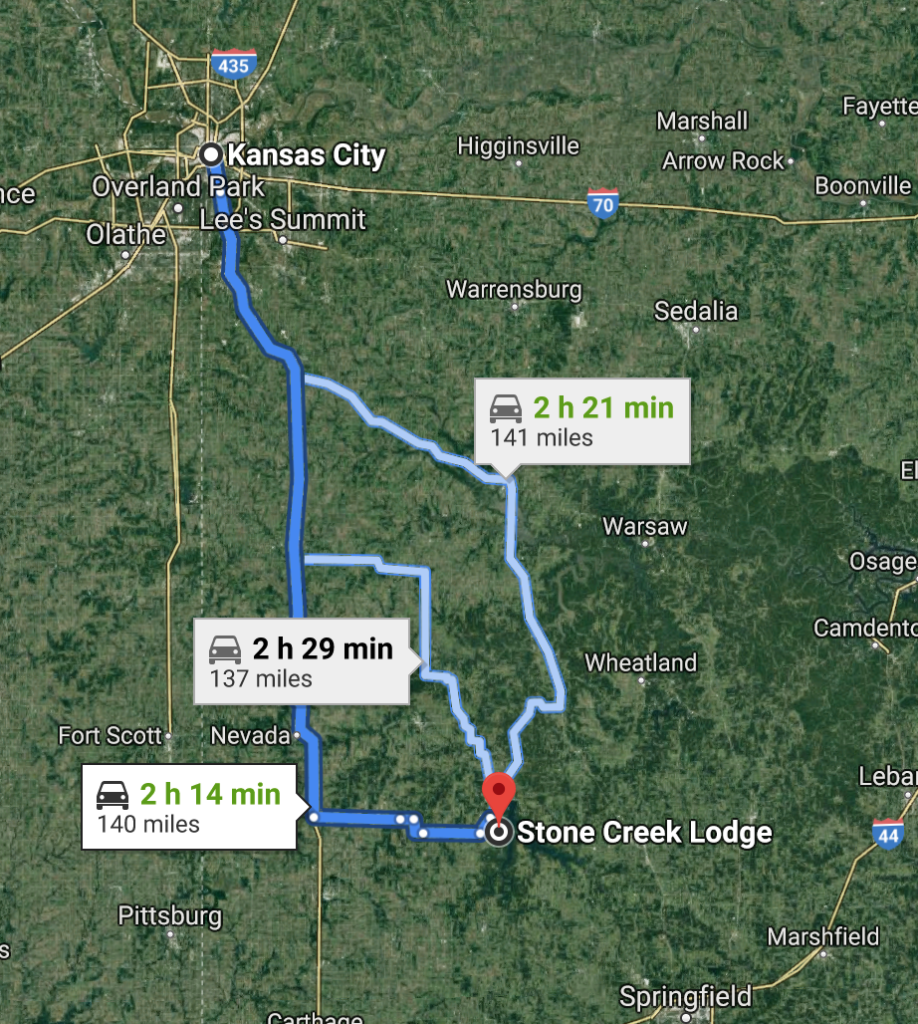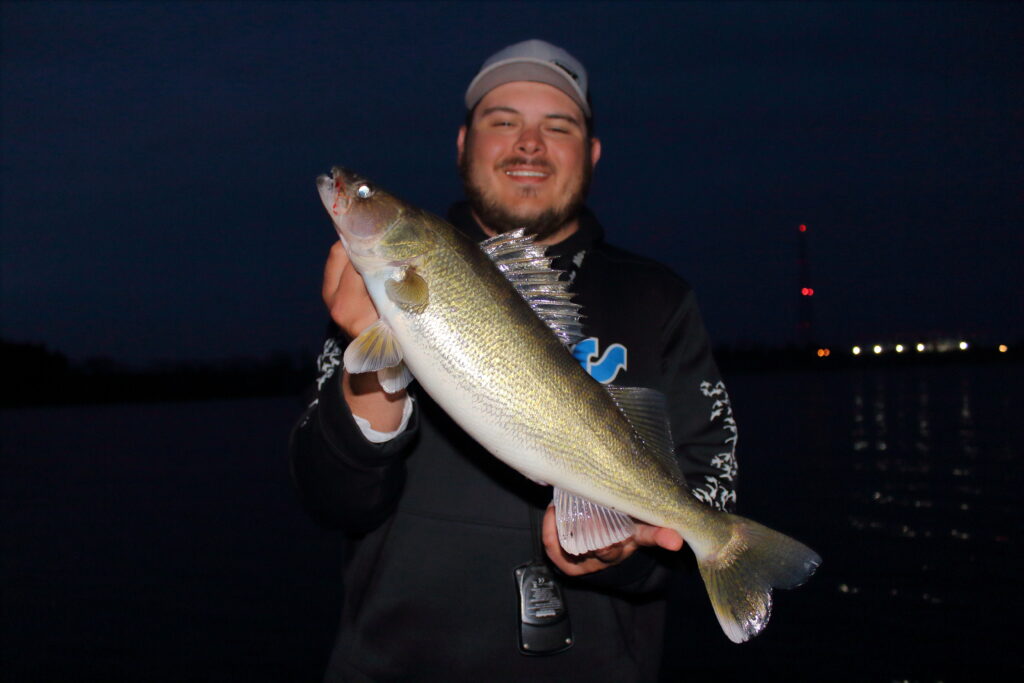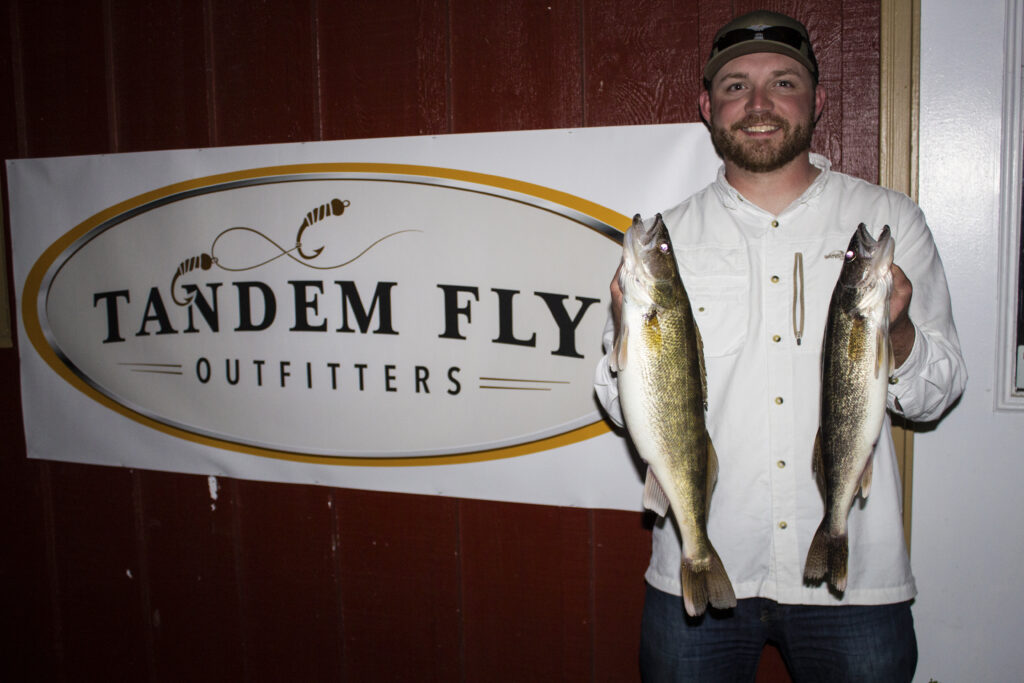Welcome to the Stockton Series! This is the first part in a multi-stage series of stories covering all the popular seasons and methods of fishing on Stockton Lake in Southwest Missouri. Hope you enjoy!
When midwestern anglers think about catching walleye, many believe they need to head north to Minnesota, Wisconsin, or even Canada. However, I have some great news. You don’t have to travel that far to find excellent walleye fishing. You can find it right here in Missouri!

Stockton Lake, located just two and a half hours south of Kansas City, is a premiere walleye fishing destination.
At the end of March, I was fortunate to experience the “walleye spawn bite” on Stockton with Tandem Fly Outfitters, which is owned by Kris Nelson. The knowledge gained from the trip immediately made me a better walleye angler.
Going into it, I had high hopes. Over the previous two years, I fished the spawn bite in some Kansas City area lakes to no avail. I thought I was doing everything right, but after a short period of time in the boat with Nelson’s fellow guide, Cole Boyd, I learned there were some subtle tricks to up your odds.
First, targeting the right time is key. While length of day plays a major role in the walleye spawning process, you can use water temperature to determine the optimum time to fish.
“Specifically, here on Stockton, the first of March through the first of April is your best bet to catch spawning walleyes on jerkbaits,” Nelson said.
In general, you’re looking for that 45-50 degree water temperature for things to really get good.
Once you’ve determined the conditions are right, finding the best bait is key. Jerkbaits are commonly thrown to cause a territorial fish to strike. You will increase your hook-ups by using 110mm jerkbaits with three treble hooks.
Additionally, suspending jerkbaits are best. They sit in the way of walleyes, eventually irritating them enough to trigger a strike. Essentially, the bite comes from a natural instinct to defend the spawning area rather than from feeding activity.

One neat trick I learned from Cole Boyd is to take some small lead wire for fly tying and wrap it around either the front or middle treble hook. The trick is to add just enough to get the bait to suspend perfectly in the water without sinking or rising. If you plan to tune your jerkbait in a bathtub or pool, be sure to use similar water temperatures to the current conditions of the lake you plan to fish.
The importance of lure color is up for debate, but there are some best bets.
“If I had to pick only one color pattern to throw, it’d be Clown,” Nelson said without hesitation. “White or French Pearl are good, too, especially if it’s sunny.”
A good rule of thumb on color selection is the lighter the day, the lighter colored the bait and the darker the day, the darker colored the bait.
Fishing high percentage times of the day is also important to increase your success rate.
“I typically don’t start putting a line in the water until 6:30pm,” Boyd stated. “There’s a big push of fish that come in at dusk, it’s like a light switch goes off and they’ll come in waves throughout the evening.”
The dam area on Stockton is popular for both boaters and bank fisherman, but don’t be afraid to explore. Many folks get caught up chasing boats instead of fish. When scouting an area on your graph, look for bigger rock and gradually sloping banks.
As you begin making your casts, pull the rod tip in a sweeping motion to get your bait down initially. The goal is to be at least six feet deep. 10-pound braid will get you down deeper and is more sensitive, but has zero stretch. As a result, sometimes folks pull the hooks out of the mouth of the walleye from horsing it in, so it’s vital to reel in slow.
8 or 10-pound fluorocarbon line works just as well. And don’t worry, the walleyes won’t cut the line, either, which is a common misconception considering their sharp teeth. You absolutely do not need a steel leader for walleye fishing.
The retrieve cadence should consist of 4-6 seconds between each jerk of the rod. The bait really needs to sit there to make them mad and trigger a strike.

Using those tactics allowed us to catch several nice walleye during my time at Stockton. I knew it was the real deal when I used the same strategies to catch more walleye in the Kansas City area immediately after the trip.
Nelson’s final piece of advice is perhaps the most important.
“Keep your head up if you don’t catch them your first time out,” he said. “It takes a while to learn what the bite is like. Put in the time and you’ll reap the rewards.”
If you want my advice on the matter, just call Tandem Fly Outfitters.
Be sure to visit their website and find them on social media:

